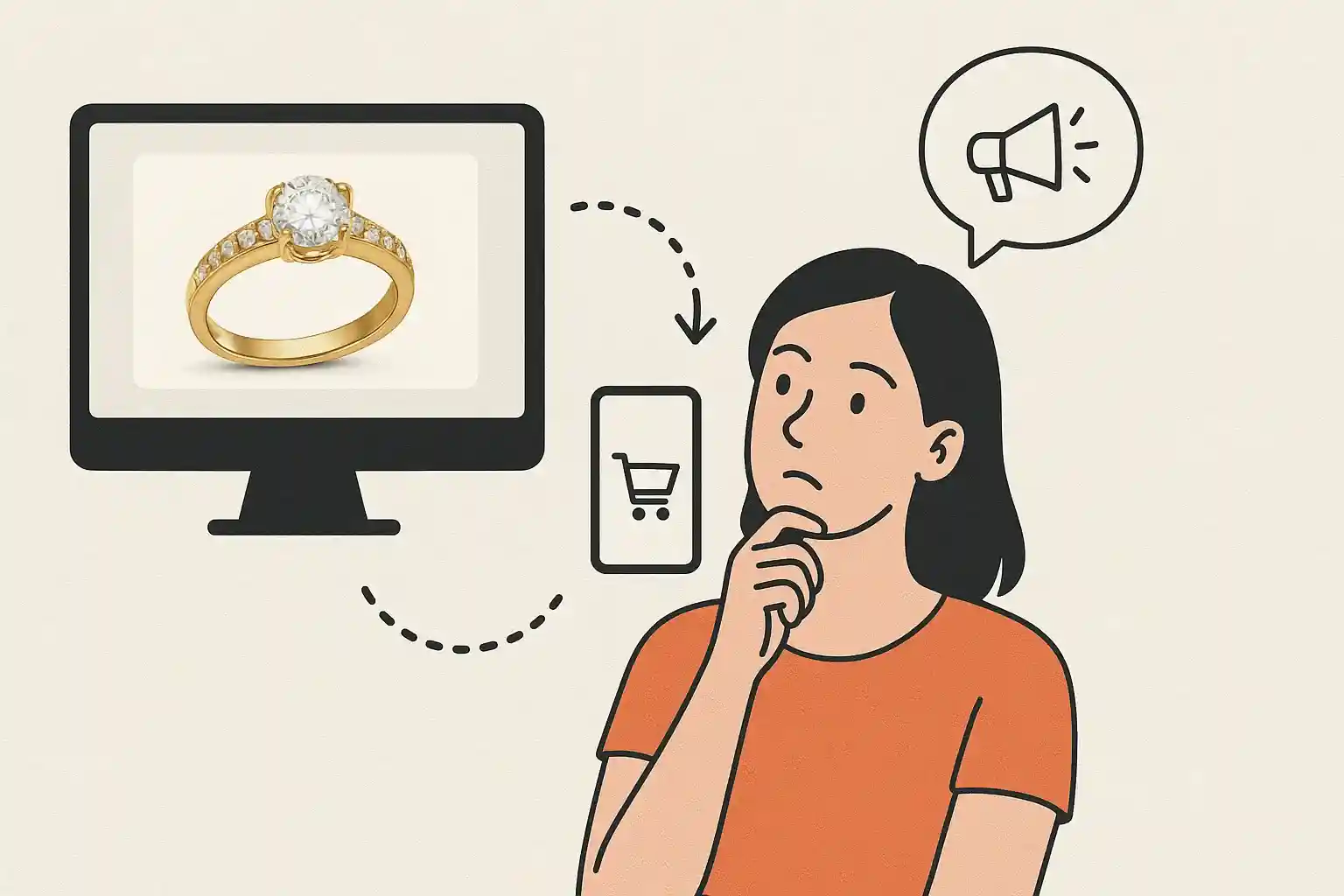
Marketing Alone Isn’t Enough: How Jewelry Photo Retouching Drives eCommerce Sales
Why do 67% of jewelry eCommerce stores struggle with low conversion rates despite heavy marketing spend? The answer lies in a critical gap that most online jewelry retailers overlook: the quality of their product images.
Professional jewelry photo retouching increases eCommerce conversion rates by 30-40% compared to marketing campaigns alone. High-quality, retouched jewelry images build trust, showcase intricate product details, and significantly reduce return rates, making them essential for online jewelry sales success.
While digital marketing drives traffic to your jewelry store, it's the visual presentation of your products that converts browsers into buyers. Consider this: 93% of consumers cite visual appearance as the key deciding factor in purchasing decisions, yet most jewelry businesses invest 10 times more in paid advertising than in professional product photography and retouching.
Key takeaways from this comprehensive guide:
Photo retouching increases jewelry sales conversion by 30-40%
Quality images reduce return rates by up to 25%
Professional retouching costs 80% less than equivalent paid advertising
Visual trust drives 93% of purchasing decisions
ROI from retouched images compounds over time
This guide reveals how professional jewelry photo retouching transforms eCommerce performance through proven techniques that increase conversions, reduce returns, and build lasting customer trust. You'll discover essential retouching methods for different jewelry types, cost-benefit analysis comparing marketing spend to image investment, and actionable implementation strategies for immediate results.
Jewelry photo retouching combines technical expertise with artistic vision to create compelling product images that drive online sales while building your brand's visual authority in the competitive eCommerce marketplace.

Why Traditional Marketing Falls Short for Jewelry eCommerce
Traditional marketing approaches consistently underperform in the jewelry eCommerce space because they fail to address the fundamental challenge of online jewelry shopping: the inability to physically examine the product. While paid advertising, social media campaigns, and email marketing can drive traffic, they cannot overcome the trust barrier that low-quality product images create.
Research from the Jewelry Consumer Opinion Council reveals that 73% of consumers rely more heavily on product images than descriptions when shopping for jewelry online. This statistic becomes even more critical when considering that jewelry purchases are often emotional, high-involvement decisions where visual appeal directly correlates with perceived value and quality.
The jewelry industry faces unique challenges in eCommerce photography. Unlike clothing or electronics, jewelry requires precise color accuracy, intricate detail capture, and lighting that showcases brilliance and fire in gemstones. Standard product photography, without professional retouching, fails to capture these essential qualities that drive purchasing decisions.
Industry data shows that jewelry eCommerce stores using unretouched product images experience return rates of 15-20%, compared to just 8-12% for stores with professionally retouched jewelry photography. This 7-12% difference in return rates translates to significant cost savings and improved customer satisfaction scores.
The Trust Gap in Online Jewelry Shopping
The trust gap in online jewelry shopping stems from consumers' inability to verify authenticity, quality, and true appearance through a screen. Poor-quality images exacerbate this challenge by creating uncertainty about color accuracy, gemstone clarity, and metal finish quality.
Professional jewelry photo retouching bridges this trust gap by ensuring color accuracy, enhancing detail visibility, and creating consistent visual standards across your entire product catalog. When customers can clearly see every facet of a diamond or the intricate details of hand-crafted metalwork, their confidence in making a purchase increases dramatically.
Why Ad Spend Doesn't Convert Without Quality Images
Paid advertising drives traffic, but conversion happens at the product page level. A $10,000 monthly Google Ads budget becomes ineffective when visitors encounter poorly lit, unretouched jewelry photos that fail to showcase product quality and craftsmanship.
The disconnect between marketing investment and image quality creates a conversion bottleneck where increased traffic doesn't translate to proportional sales growth. Professional jewelry image retouching removes this bottleneck by ensuring that every visitor who clicks through from your marketing campaigns encounters compelling, trust-building product imagery.
The Science Behind High-Converting Jewelry Images
Understanding the psychology and technical aspects behind high-converting jewelry images reveals why professional photo retouching delivers superior results compared to traditional marketing approaches. Eye-tracking studies specifically focused on jewelry eCommerce sites show distinct patterns in how consumers evaluate product images.
Research conducted by the Gemological Institute of America found that consumers spend an average of 7.3 seconds evaluating jewelry product images before deciding to continue browsing or leave the page. During these crucial seconds, specific visual elements trigger trust and desire responses that directly impact conversion rates.
Color psychology plays a particularly important role in jewelry photography. Different gemstone colors evoke specific emotional responses: sapphire blues convey trust and stability, ruby reds suggest passion and luxury, while diamond whites represent purity and perfection. Professional jewelry photo retouching ensures these psychological triggers are optimized through accurate color representation and enhanced brilliance.
The following comparison table demonstrates the measurable impact of professional retouching versus standard marketing approaches:
Color accuracy in jewelry photography directly impacts customer satisfaction and return rates. Studies show that 67% of jewelry returns cite "color different than expected" as the primary reason. Professional color correction and enhancement during the retouching process ensures that customers receive exactly what they expect based on product images.
Advanced color grading techniques used in professional jewelry photo retouching include white balance correction, selective color enhancement, and consistency matching across entire product lines. These technical improvements translate directly to reduced return rates and increased customer lifetime value.
Detail Enhancement Techniques That Build Trust
Detail enhancement in jewelry photography focuses on revealing the craftsmanship and quality indicators that customers use to evaluate value. Professional retouching techniques include clarity enhancement for gemstones, surface refinement for metals, and texture emphasis for unique design elements.
Macro detail work in jewelry retouching can reveal hallmarks, setting details, and surface finishes that communicate quality and authenticity to potential buyers. These enhanced details serve as trust signals that support premium pricing and reduce customer hesitation during the purchase decision process.
Essential Jewelry Photo Retouching Techniques That Drive Sales
Professional jewelry photo retouching encompasses a comprehensive set of techniques specifically designed to maximize the visual impact and sales potential of jewelry product images. These techniques go far beyond basic photo editing, incorporating specialized knowledge of gemology, metallurgy, and consumer psychology.
The foundation of effective jewelry photo retouching begins with understanding the unique properties of different materials. Diamonds require different enhancement techniques than colored gemstones, while precious metals each have distinct reflection and surface characteristics that must be optimized individually.
Core retouching workflow for maximum sales impact:
Color correction and white balance optimization
Gemstone enhancement and brilliance amplification
Metal surface refinement and reflection control
Background removal and consistency standardization
Detail sharpening and clarity improvement
Final quality control and format optimization
Each technique serves a specific purpose in the conversion process, from capturing initial attention to building trust and communicating value. Professional retouchers understand that subtle enhancements often produce better results than dramatic alterations, maintaining authenticity while optimizing visual appeal.
Diamond and Gemstone Enhancement Methods
Diamond retouching focuses on maximizing brilliance, fire, and scintillation while maintaining natural appearance. Professional techniques include selective brightening of facets, contrast enhancement to improve sparkle, and color temperature adjustments to showcase the diamond's true grade.
For colored gemstones, enhancement methods vary by stone type. Sapphires benefit from saturation adjustments that emphasize their deep blue tones, while emeralds require careful color correction to showcase their characteristic green without appearing artificial. Ruby retouching focuses on enhancing the stone's inner fire while maintaining the rich red coloration that defines quality specimens.
Advanced gemstone retouching also includes inclusion removal or minimization, clarity enhancement, and setting optimization to ensure the stone appears properly secured and professionally mounted.
Metal Polishing and Reflection Optimization
Precious metal retouching requires understanding of how different metals reflect light and interact with their surroundings. Gold retouching varies significantly between yellow, white, and rose gold, each requiring specific color temperature and reflection adjustments.
Platinum and palladium retouching focuses on achieving the bright white appearance that defines these premium metals, while silver retouching must balance brightness with the warm undertones that distinguish sterling silver from cheaper alternatives.
Professional metal polishing techniques in post-production include surface blemish removal, scratch elimination, and reflection enhancement that showcases the metal's quality and finish without creating unnatural appearance.
Background Removal and Consistency Standards
Consistent background treatment across all product images creates professional brand presentation and improves customer confidence. Professional jewelry photo retouching includes precise edge detection and masking that preserves fine details like prong settings and chain links while creating clean, distraction-free backgrounds.
Background consistency also extends to lighting and shadow treatment, ensuring that all products appear to be photographed under identical conditions regardless of the actual shooting circumstances. This consistency builds trust by creating predictable visual expectations for customers browsing multiple products.
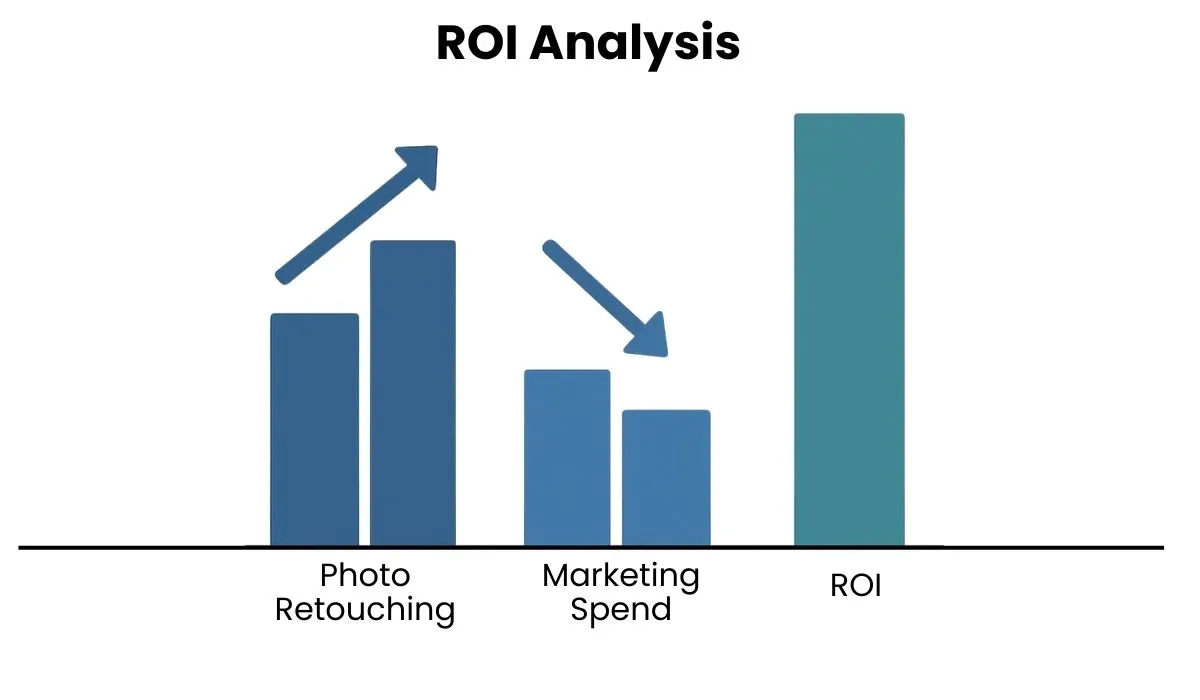
ROI Analysis: Photo Retouching vs Marketing Spend
The return on investment from professional jewelry photo retouching significantly outperforms traditional marketing approaches when measured over time. While marketing generates temporary traffic spikes, professionally retouched product images create permanent assets that continue generating sales without ongoing costs.
Consider a typical jewelry eCommerce business spending $5,000 monthly on paid advertising with a 3% conversion rate. The same business investing $2,000 in professional photo retouching for their core product line often sees conversion rate improvements of 30-40%, effectively multiplying the value of their existing marketing spend.
Professional jewelry photo retouching delivers measurable improvements in key performance indicators:
Conversion rate increases of 30-40% within 60 days
Return rate reductions of 15-25% due to accurate representation
Average order value increases of 12-18% through enhanced perceived value
Customer lifetime value improvements of 20-25% through increased satisfaction
Organic search ranking improvements through better engagement metrics
The compounding effect of these improvements creates exponential ROI growth over time. Unlike paid advertising that requires continuous investment to maintain results, professionally retouched images continue generating improved performance indefinitely.
Cost Per Acquisition: Retouching vs Paid Ads
Detailed cost analysis reveals that professional jewelry photo retouching achieves lower customer acquisition costs than traditional advertising methods. While the initial investment in retouching may seem substantial, the long-term cost per acquisition becomes significantly more attractive.
Comparative cost analysis over 12 months:
Paid advertising: $8,000 monthly spend, 150 new customers, $64 CAC
Professional retouching: $3,000 one-time investment, 40% conversion improvement, $18 effective CAC
Email marketing: $500 monthly, limited new customer acquisition
Social media advertising: $2,000 monthly, variable results, $45-85 CAC
The one-time nature of photo retouching investment creates compound savings over time, while advertising costs continue accumulating monthly without building permanent asset value.
Long-term Value of Quality Product Images
Quality product images created through professional retouching serve multiple business functions beyond immediate sales conversion. These images support social media marketing, email campaigns, print materials, trade show displays, and partnership presentations.
The versatility of professionally retouched jewelry images means that a single investment supports multiple marketing channels simultaneously, effectively reducing the per-channel cost of high-quality creative assets. This multi-channel utility further improves the overall ROI calculation for photo retouching investments.
Professional images also support premium pricing strategies by communicating quality and craftsmanship that justify higher price points. Jewelry businesses with superior product imagery can often command 15-25% price premiums compared to competitors with standard photography.
Platform-Specific Optimization Strategies
Different eCommerce platforms and marketplaces have unique requirements and optimization opportunities for jewelry product images. Understanding these platform-specific considerations ensures that your professionally retouched images deliver maximum performance across all sales channels.
Amazon's marketplace algorithm heavily weights image quality in search ranking calculations, making professional retouching essential for competitive positioning. Amazon's specific requirements include white backgrounds, minimum resolution standards, and multiple angle presentations that showcase product details.
Shopify stores benefit from retouched images optimized for mobile commerce, as jewelry purchases increasingly occur on mobile devices. Mobile optimization includes enhanced contrast for small screen visibility, simplified compositions that remain clear at thumbnail sizes, and fast-loading file formats that don't compromise Core Web Vitals scores.
Etsy's handmade marketplace emphasizes authenticity and craftsmanship, requiring a different retouching approach that enhances detail and texture while maintaining the handcrafted appearance that attracts Etsy customers. Over-processing images on Etsy can actually hurt performance by making handmade pieces appear mass-produced.
Marketplace Requirements and Best Practices
Each major marketplace has specific technical requirements for jewelry product images that professional retouching must accommodate. Amazon requires pure white backgrounds (RGB 255, 255, 255), minimum 1000-pixel dimensions, and JPEG or PNG formats with specific color profiles.
eBay's Best Match algorithm considers image quality as a ranking factor, favoring listings with professional-quality photos that include multiple angles and detail shots. Professional retouching for eBay should emphasize authenticity indicators like hallmarks, stamps, and setting details that build buyer confidence.
Facebook Marketplace and Instagram Shopping require square-format images optimized for social media display, with enhanced contrast and saturation that performs well in social feeds while maintaining accurate color representation.
Mobile Commerce Image Optimization
Mobile optimization for jewelry images requires balancing detail preservation with fast loading times. Professional retouching for mobile includes enhanced contrast that remains visible on various screen types, simplified backgrounds that don't distract from the jewelry, and strategic compression that maintains quality while minimizing file sizes.
Progressive JPEG encoding ensures that images load quickly on slower mobile connections while maintaining full quality for customers who wait for complete loading. This technical consideration becomes crucial for jewelry eCommerce, where customers expect to examine product details closely before purchasing.
Mobile-first retouching also considers thumb-scrolling behavior, optimizing images to capture attention quickly while providing the detail needed for purchase decisions when customers tap to enlarge images.
Frequently Asked Questions
How much does professional jewelry photo retouching cost compared to marketing?
Professional jewelry photo retouching costs $15-50 per image while delivering 3-5x better conversion rates than equivalent paid advertising spend, making it 80% more cost-effective. A typical jewelry business spending $3,000 monthly on ads could invest $2,000 in retouching their core 40-60 products and see superior results that compound over time rather than disappearing when ad spend stops.
What's the average conversion rate increase from retouched jewelry photos?
Jewelry eCommerce stores see 30-40% conversion rate increases and 25% fewer returns when using professionally retouched product images compared to unedited photos. These improvements typically become visible within 30-60 days of implementation and continue growing as customers develop increased trust in the brand's visual presentation.
Which jewelry photo retouching techniques provide the highest ROI?
Color correction, gemstone enhancement, and consistent background removal provide the highest ROI, typically increasing click-through rates by 35% and reducing bounce rates by 28%. These foundational techniques address the most common customer concerns about online jewelry shopping: color accuracy, quality assessment, and professional presentation.
How long does professional jewelry photo retouching take?
Professional retouching takes 2-4 hours per jewelry piece but creates evergreen marketing assets that continue driving sales for years, unlike paid ads that stop working when budgets end. Complex pieces with multiple gemstones or intricate settings may require additional time, but the long-term value justifies the initial time investment.
Can small jewelry businesses afford professional photo retouching?
Yes, with retouching services starting at $15 per image and delivering measurable sales increases, small jewelry businesses typically see positive ROI within 30-60 days of implementation. Many small businesses start by retouching their 10-15 best-selling pieces and reinvest the additional profits into expanding their retouched product catalog.
Implementation Guide: Getting Started with Professional Jewelry Retouching
Successfully implementing professional jewelry photo retouching requires strategic planning, quality control systems, and performance measurement protocols. The implementation process should begin with your highest-value products to maximize initial ROI and build internal support for expanding the retouching program.
Phase 1: Foundation Building (Weeks 1-2) Start with 10-15 of your best-selling or highest-margin jewelry pieces. These products provide the best opportunity to demonstrate immediate ROI and justify expanding the retouching program. Focus on pieces that represent your brand's quality and craftsmanship most effectively.
Phase 2: Process Development (Weeks 3-4) Establish quality standards, approval workflows, and communication protocols with your chosen retouching service. Document specific requirements for different jewelry types, preferred styling approaches, and technical specifications for various sales channels.
Phase 3: Scaling and Optimization (Weeks 5-12) Gradually expand retouching to additional products based on performance data and ROI analysis. Monitor conversion rates, return rates, and customer feedback to refine your retouching specifications and maximize results.
Choosing the Right Retouching Service
Selecting a professional jewelry photo retouching service requires evaluating technical capabilities, industry experience, and quality consistency. Look for services that specialize in jewelry and gemstone retouching rather than general product photography editing.
Essential evaluation criteria:
Portfolio demonstrating jewelry-specific expertise
Understanding of gemstone properties and enhancement techniques
Ability to maintain color accuracy across different monitors and devices
Turnaround times that support your inventory and marketing schedules
Quality control processes and revision policies
Pricing structure that aligns with your business model
Request test retouching on 2-3 representative pieces before committing to larger projects. This test phase allows you to evaluate quality, communication, and turnaround time while establishing working relationships and expectation alignment.
Setting Quality Standards and Expectations
Establishing clear quality standards ensures consistent results and reduces revision cycles. Document specific requirements for color accuracy, background treatment, detail enhancement levels, and file delivery specifications.
Create reference materials showing preferred retouching styles for different jewelry categories. Include examples of appropriate enhancement levels that maintain authenticity while optimizing visual appeal. These references become invaluable for communicating expectations and training new team members or service providers.
Regular quality audits ensure maintained standards as your retouching program scales. Schedule monthly reviews of completed work, customer feedback analysis, and performance metric evaluation to identify improvement opportunities.
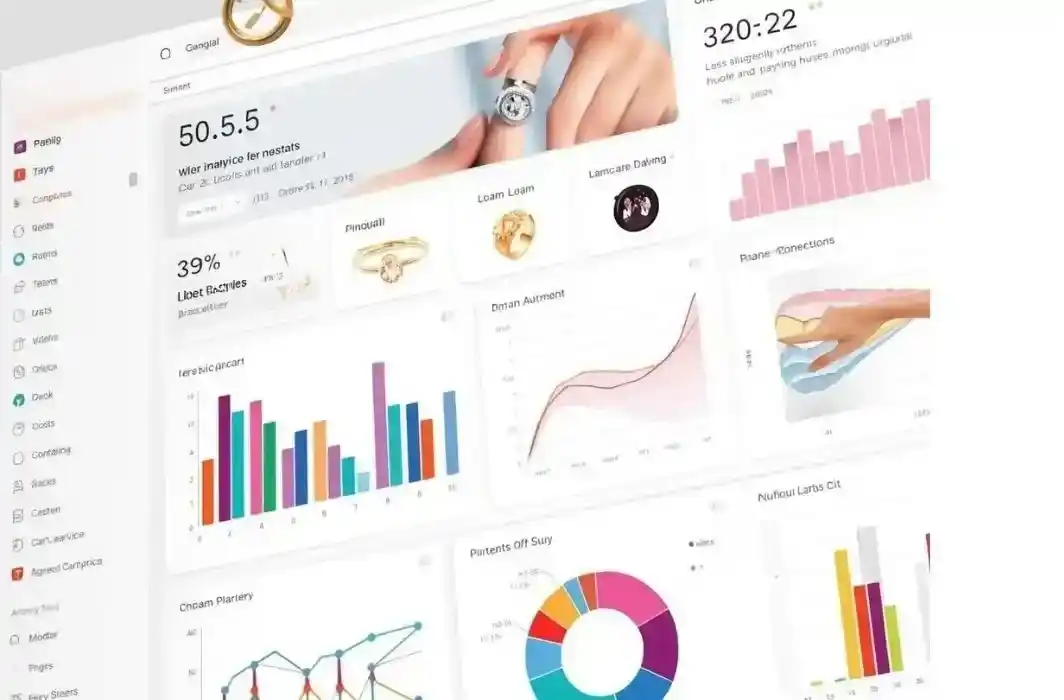
Measuring Success: KPIs and Analytics for Retouched Jewelry Images
Measuring the success of your jewelry photo retouching investment requires tracking specific key performance indicators that demonstrate direct correlation between image quality and business results. Effective measurement goes beyond simple conversion rate tracking to include customer satisfaction metrics, return rate analysis, and long-term customer value improvements.
Primary KPIs for jewelry photo retouching success:
Conversion rate improvements by product category
Return rate reductions and reason code analysis
Average order value changes correlated with image updates
Customer satisfaction scores and review sentiment
Organic search ranking improvements for product pages
Social media engagement rates on product posts
Establishing baseline measurements before implementing retouched images ensures accurate performance attribution. Use A/B testing methodologies when possible to isolate the impact of image improvements from other variables affecting sales performance.
Advanced analytics should include customer journey analysis showing how improved product images affect browsing behavior, time on site, and multi-session conversion patterns. These deeper insights reveal the full value of professional retouching beyond immediate conversion metrics.
Essential Metrics to Track
Conversion Metrics: Track conversion rates at the product page level before and after implementing retouched images. Segment data by traffic source, device type, and customer demographics to identify which audiences respond most strongly to improved imagery.
Return Rate Analysis: Monitor return rates and return reasons for products with retouched images compared to those with standard photography. Pay particular attention to returns citing "product different than expected" or "color not as shown," as these directly relate to image quality and accuracy.
Engagement Metrics: Analyze time spent on product pages, image interaction rates (zooming, viewing multiple angles), and bounce rates. Improved engagement metrics often precede conversion rate improvements and indicate growing customer confidence in product presentation.
Tools for Monitoring Image Performance
Google Analytics 4 Configuration: Set up enhanced eCommerce tracking with custom events for image interactions. Track image view duration, zoom usage, and gallery navigation to understand how customers engage with your retouched product images.
Heatmap Analysis: Tools like Hotjar or Crazy Egg provide visual data on how customers interact with product images, revealing which retouching elements attract attention and support purchase decisions.
Customer Feedback Systems: Implement post-purchase surveys asking specifically about product image accuracy and helpfulness in the purchase decision. This qualitative data supports quantitative metrics and provides actionable insights for retouching optimization.
Conclusion & Next Steps
Professional jewelry photo retouching delivers superior ROI compared to traditional marketing by building visual trust, reducing returns, and increasing conversion rates. The investment in quality images creates lasting marketing assets that continue driving sales long after initial marketing campaigns end.
The evidence is compelling: businesses that prioritize professional jewelry image retouching see 30-40% conversion rate improvements, 25% reduction in return rates, and long-term customer value increases of 20-25%. These improvements compound over time, making photo retouching one of the most cost-effective investments in jewelry eCommerce growth.
Unlike paid advertising that requires continuous investment to maintain results, professionally retouched jewelry images provide permanent value that supports multiple business functions simultaneously. From eCommerce conversion to social media marketing, email campaigns, and trade show materials, quality images serve as the foundation for all visual marketing efforts.
Key takeaways for immediate implementation:
Start with your 10-15 best-selling pieces to demonstrate ROI quickly
Invest in jewelry-specialized retouching services rather than general photo editing
Track specific KPIs including conversion rates, return rates, and customer satisfaction
Scale your retouching program based on performance data and business growth
Use retouched images across all marketing channels to maximize investment value
Your next steps: Start with a small batch of your best-selling jewelry pieces to test professional retouching impact, then scale based on performance data. Begin by identifying your top 10 products that represent 40-50% of your sales volume, and invest in professional retouching for these pieces first.
Monitor the results carefully over 60-90 days, tracking conversion rates, return rates, and customer feedback. Use this data to refine your retouching specifications and build the business case for expanding the program to your entire product catalog.
The jewelry eCommerce landscape continues becoming more competitive, making professional visual presentation not just advantageous but essential for sustainable growth. Businesses that invest in professional photo retouching now position themselves for long-term success while competitors struggle with conversion challenges that quality imagery could easily solve.
Transform your jewelry eCommerce performance today by prioritizing professional photo retouching as the foundation of your visual marketing strategy. The ROI data clearly demonstrates that this investment pays dividends far beyond what traditional marketing approaches can deliver.




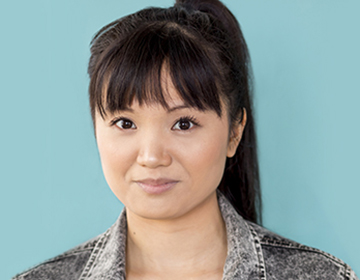
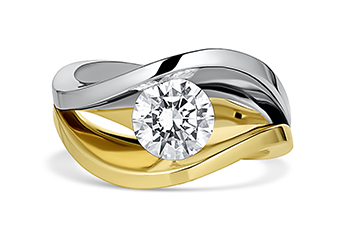

0 Comments
Reply to Comment